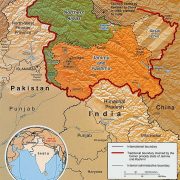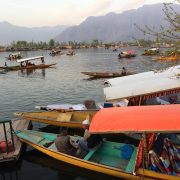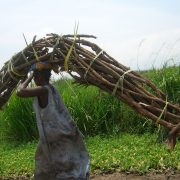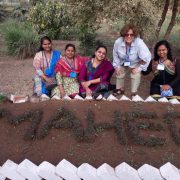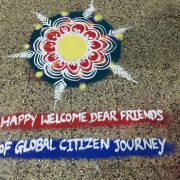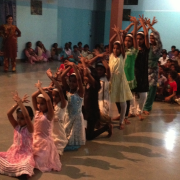Global Citizen Journey is excited about the formation of our GCJ delegation to Kashmir this fall. We still have a few openings and are planning our next Information Session for April 28. There is lots of information up on the website. Feel free to contact co-director Irene Michon at imichon58@gmail.com if you want more details sooner than late April! We hope you are intrigued and will begin dreaming of Kashmir with us… The application for the journey is now available.
We are pleased to host this “Meet & Greet” session in Seattle on Saturday from 10:30 am to noon at the wonderful Couth Buzzard Books & Espresso Buono Cafe, (8310 Greenwood Ave N) for anyone interested in learning about Kashmir… and especially for those of you interested to participate in our Kashmir 2018 delegation!
GCJ delegates met many wonderful Kashmiris during their travels in India last spring and they implored us to visit Kashmir and assured us we would fall in love with their beautiful land. They were right! It is a beautiful place with snow-capped mountains, the gorgeous Dal Lake, rich culture and traditions… And deep pain. The complex and conflictual conditions in Kashmir seem tailor-made for our Global Citizen Journey (GCJ) model and in this time of Islamaphobia and increasing tensions amongst the various big powers on the planet, the time seems ripe. As global citizens, we will listen to the many sides of the issues there and we will bring stories of what we learned back to our home communities. Read more here: http://globalcitizenjourney.org/about-india/india-2018-kashmir-2/
For further details, please contact Susan Partnow at: susan@globalcitizenjourney.org
Follow us on Facebook for information on GCJ events, photos, and more!
Global Citizen Journey visited Burundi in 2008, but just because the trip ended didn’t mean the engagement with the community did too. To this day, GCJ delegates are partnered with The Carama Women’s Future Association in Burundi, an organization that works with the Carama Widows Association and helps them purchase land so that these powerful women can support themselves and their families financially. To learn more about this amazing organization, visit here or to donate to help with their next land purchase visit here. >> https://www.facebook.com/238561311217/photos/a.10150191650251218.313510.238561311217/10154498186501218/?type=3&theate
Global Citizen Journey returns to India with ambitious and adventurous plans to visit one of the most beautiful, diverse, and contested areas of India in September 2018. Most of us know little about Kashmir beyond a vague awareness that it is embroiled in intractable conflict. We will be guided by our local sponsor ELFA International (Education and Livelihood For All) who will connect us with local Kashmiri leaders, nonprofits and organizations so that we can learn, explore, and listen together.
Our goal is to foster dialogue and relationship building and find bases of unity, a common purpose, and a creative process as well as a project that will be meaningful to the Kashmiri people. Read more.
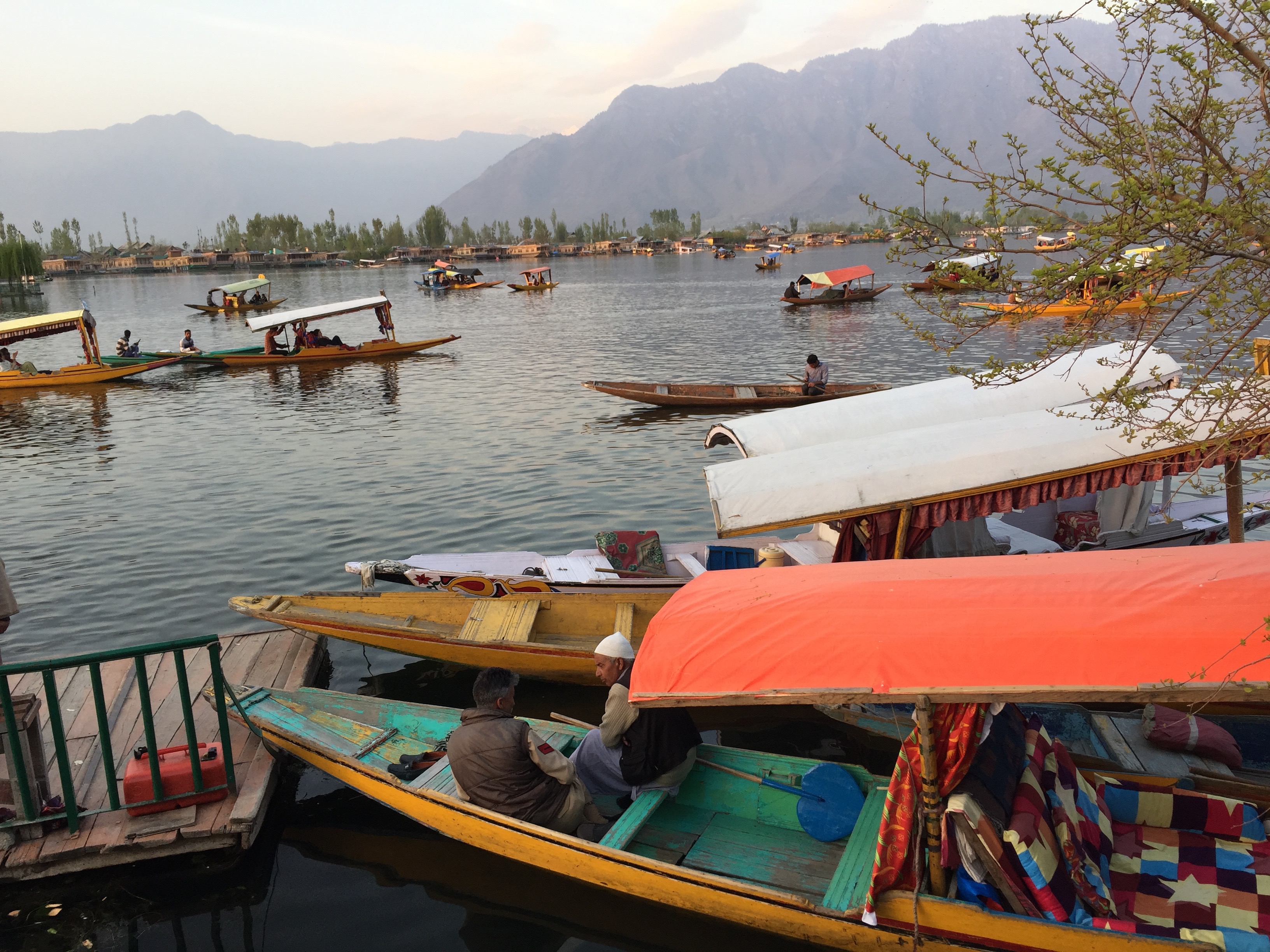
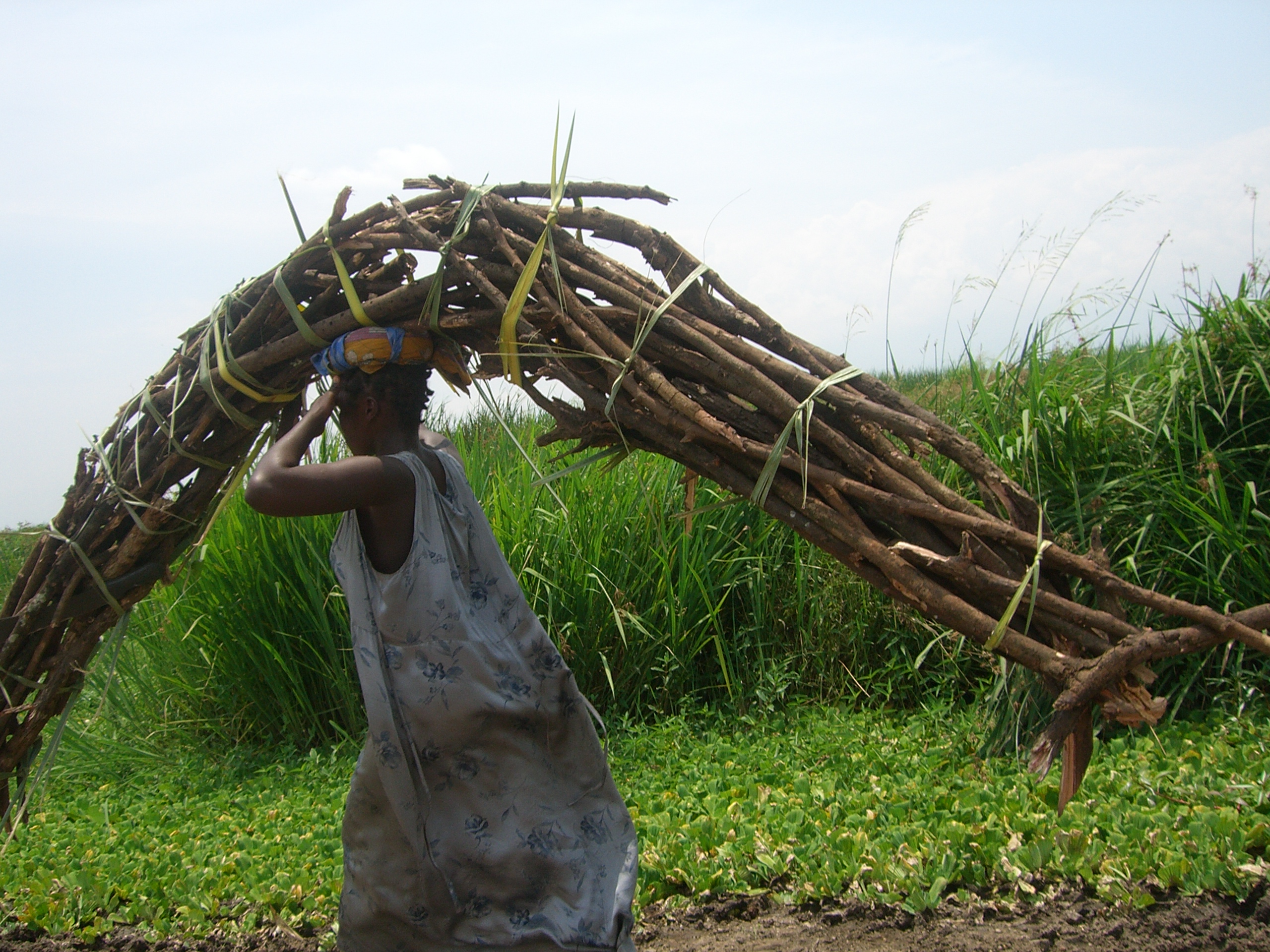 Come learn about United Village – a wonderful local GCJ partner – for a fun and fulfilling evening! You’ll hear stories from Seattle’s inspiring international summer day Peace Camp here in Seattle, founded by Gretchen Rowe, with counselors from India and Uganda this summer. Bernard will speak about Uganda Martyrs Orphans’ Project. We’ll share highlights from the remarkable delegation of Global Citizen Journey to Maher Communities in Pune, India —
Come learn about United Village – a wonderful local GCJ partner – for a fun and fulfilling evening! You’ll hear stories from Seattle’s inspiring international summer day Peace Camp here in Seattle, founded by Gretchen Rowe, with counselors from India and Uganda this summer. Bernard will speak about Uganda Martyrs Orphans’ Project. We’ll share highlights from the remarkable delegation of Global Citizen Journey to Maher Communities in Pune, India —
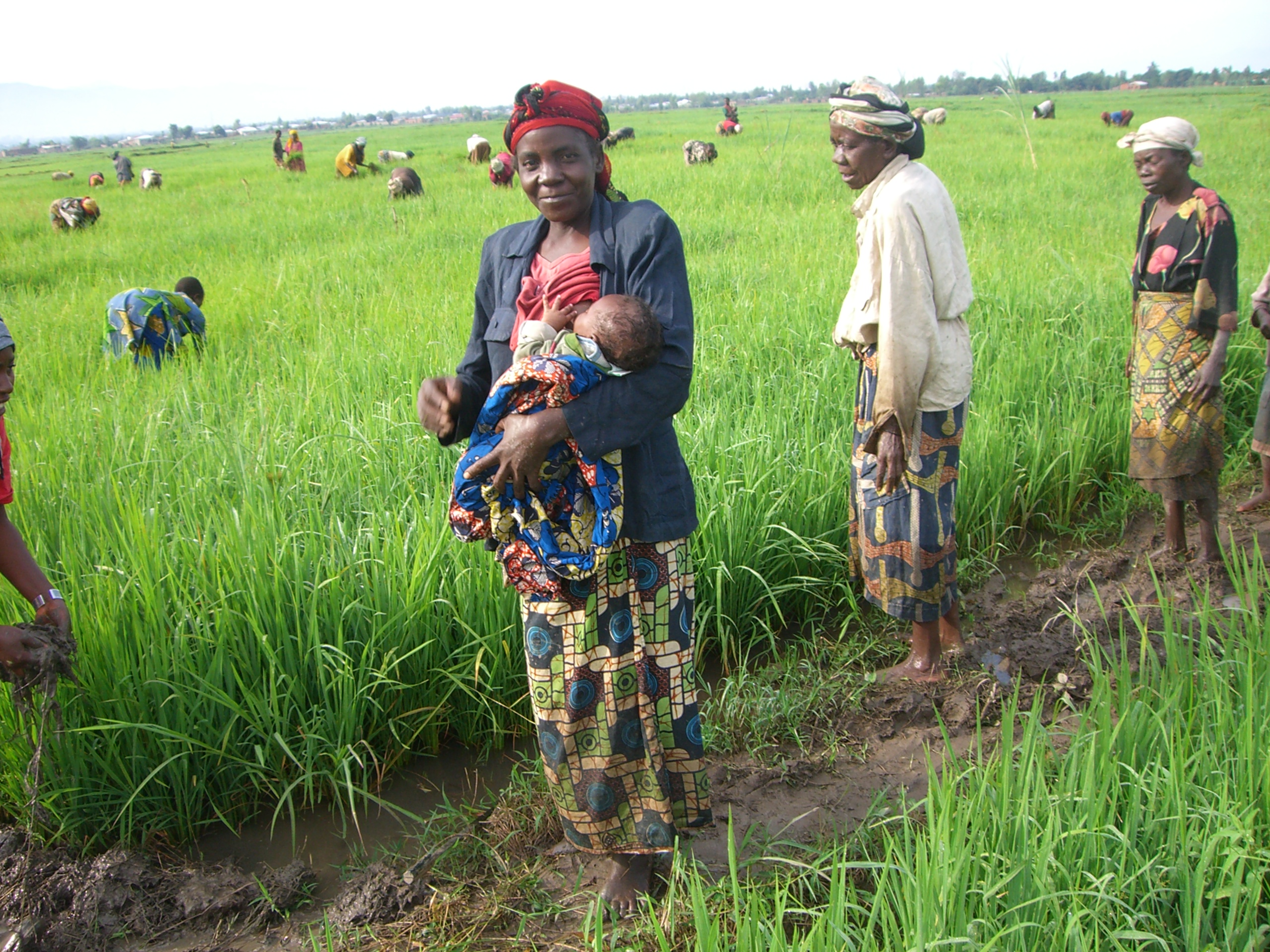 And then you’ll meet our featured guest Prosper Ndabishuriye, founder of Youth in Construction in a World of Destruction, from tiny Burundi where is doing extraordinary work to build homes, spread hope, and help children go to school. We’ll top the evening off with some Bollywood dancing led by the dazzling Gaus Sayyad and Mangesh Pol – counselors at Peace Camp and delegates from GCJ Maher in India. Wow! What an Internationally United Village all in one night!
And then you’ll meet our featured guest Prosper Ndabishuriye, founder of Youth in Construction in a World of Destruction, from tiny Burundi where is doing extraordinary work to build homes, spread hope, and help children go to school. We’ll top the evening off with some Bollywood dancing led by the dazzling Gaus Sayyad and Mangesh Pol – counselors at Peace Camp and delegates from GCJ Maher in India. Wow! What an Internationally United Village all in one night!
Wednesday, August 2, 7 to 8:30 pm
Interfaith Community Sanctuary, 1763 NW 62nd St, Seattle, Washington 98107
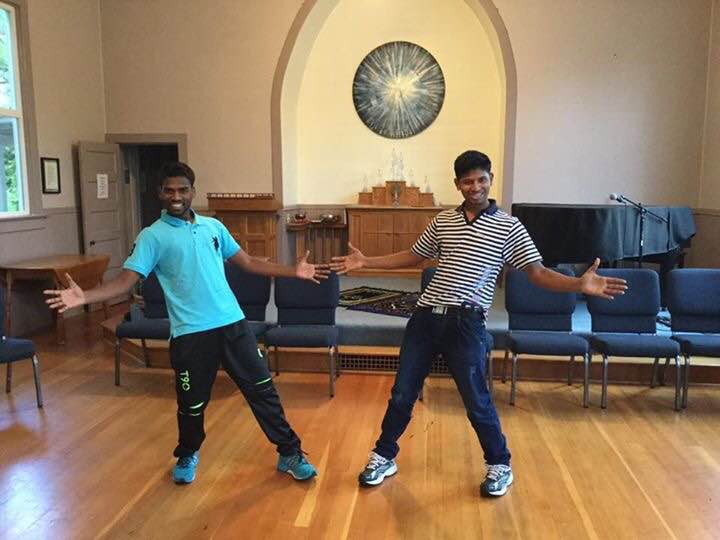
For someone like me – a somewhat ordinary woman – thinking globally has been a relatively new experience. Cocooned in my comfort zone, I spent most of my life commuting between work and home, until work made me travel and explore my own country, quite late, in my early thirties. The nature of my work made me more ambitious enough to even travel to the United States for an advanced degree. It was then that migration, refugees, conflict, disparity, racism sounded like real words for me; but so did globalization, interconnectedness, peace, and justice. In these past two or three years, I have oscillated several times between momentary greatness, reflecting on global issues and my comfort zone; job, home, and family. And then, I got the opportunity to embark on a global citizen journey in my own hometown as an Indian delegate.
So, this diverse crowd of strangers with unknown pasts, unknown political leanings and religious sentiments embarked on a journey to live and travel together for eight days. There would not have been a more appropriate place for our stay than ‘Maher’ – a home for mentally-disturbed women and destitute children. We lived with the inmates under the same roof, yet we were from different worlds and separated by our privileges. However, living close to those women and children gave us the opportunity to understand their lives, know a bit of their past, the ordeals they survived and witness the magical happiness they have created in their home of about 150 family members. Their enthusiasm and hopes are so contagious that one can hardly avoid being affected. We visited more such Maher homes in different villages witnessing the difference Maher made in the lives of so many children. It was overwhelming to hear of the dreams and aspirations of children who would have otherwise lived a life of destitution and neglect on the streets. Some would have begged, some abused, and some would have not lived for long.

Meena is on the far end wearing a blue scarf and Susan, Founder and Executive Director, is kneeling and surrounded by several Indian delegates.
The GCJ delegation was a motley crowd of eight American women, a young Spanish woman, a young man from Venezuela, a teen from Germany, and nine Indian delegates – six women and eight men – and a wonderful Jewish-American woman leading the team. They were of different age, profession, experience and probably the only thing that was common among them was that they belonged to the same planet, same globe. Though interacting with a person from a different country and skin color was not a new experience for me professionally, but I wondered how it would be like to interact with them on a personal level. How scary would it be to reveal our personal choices, thoughts, feelings, fears and even prejudices? Would they like me? Would I like them? What would we do for a whole eight days together? And then, very gently, we were exposed to the techniques of compassionate listening that soon bridged the distance between hearts, patched up the differences or at least expanded our capacity to accept and include thoughts and people that differed from us. For example, an intense debate on how to fight sexual violence ended in accepting all views from changing the way we bring up our children, being vigilant, self-defense, pepper sprays and even spiritual intervention.
There was so much to learn, experience, reflect and absorb. How could we not have been transformed by this experience? An exercise that particularly comes to mind is when I was paired with a stranger and we had to share our feelings and thoughts at that exact moment and the other person would listen compassionately, without reacting or judging and with full attention. For me, it was a great feeling to know that no matter what the person in front of me said, I had the power to react and make the other person feel listened to without having to react. Many such interactions involved diving into the deepest and some dark corners of my mind and re-surfacing feelings that had not yet died but still buried deep into oblivion. For someone like me who is very selective about what I am sharing and with whom, it was a great churning of emotions and a whole lot of extra effort to open up. It made me wonder how inept I was at openly accepting my feelings, showing my wounds and weaknesses, letting go and being able to talk calmly about the most disturbing facts of my life. Some wounds never heal, but it was nice to have someone to listen to me and acknowledge the pain especially when there was a safe space to open up. It is true that life hardens us as it subjects us to traumas and troubles over time and to protect ourselves from being hurt, we build walls around us – walls of indifference, insensitivity, and aversion to everything that may expose our weaknesses. Special efforts are surely needed to cultivate compassion in hearts hardened by misery and distrust.
There were some light moments as well with cooking and serving Jewish delicacies, American apple pie, Indian street food and some green smoothies by an Indian delegate, who is a passionate proponent of organic farming. Some witty delegates lightened the air by punctuating intense moments with their humor. A dance program with the children and women of Maher, however, stole the show revealing a bit of Maher’s recipe of creating joy by people who once had nothing. Most of us, especially the foreign delegates could not have enough of the beautiful things made at the Maher production house – purses and bags of flamboyant colors and elegant designs, candles, greeting cards and spicy Indian masalas.
Being a learning maniac, I was enthused with the Open-Space Technology and World Café that were on the agenda towards the end. Did I wonder how chaotic it would be when 150 people discussed equity, justice and empowerment in a not so big hall of a local college? But the day dawned to put all my apprehensions and anxieties to rest as a team of Maher volunteers dressed in bright yellow that we fondly refer to as the ‘Yellow Brigade’ made it happen. In no time, 150 people were organized into groups to collectively harvest ideas, dreams, ambitions and plans toward advancing humanity to a more just, equal and empowered society.
Then came the final day, the day of adjourning, that left us marveling at the countless deep interactions we had among ourselves. We would go back into our smaller, individual worlds but not without realizing that all these small individual worlds collectively made up the larger one and in knowing that we are connected. That no matter how different our citizenship, skin color, language or lifestyles were, we share common values of justice, equity and compassion. That the injustice to one community was an injustice to all and the suffering of some people would leave scars on all humanity and that humanity on earth shared a common global future.
GCJ is not about crossing borders or traveling for me, it is about breaking barriers of fear, distrust, indifference between me and people who were not like me and thus being a Global Citizen.
– Meena Jadhav, Indian delegate
The weeks were so packed and amazing that I never got to blog during the delegation itself! Now the US delegates have departed and I am alone for a few days in the beautiful hill station of Panchgani at a wonderful conference center and headquarters for Initiatives of Change (IofC) — an organization that was once called Moral Re-Armament (MRA), an international moral and spiritual movement founded in 1938 by Frank Buchman as Europe was re-arming militarily. Look it up on Wikipedia – a remarkable organization that has nurtured many ‘global citizens’ for so many years. Like Compassionate Listening, they believe change arises from the inside out. They identify four absolute values: honesty, purity, unselfishness, and love.
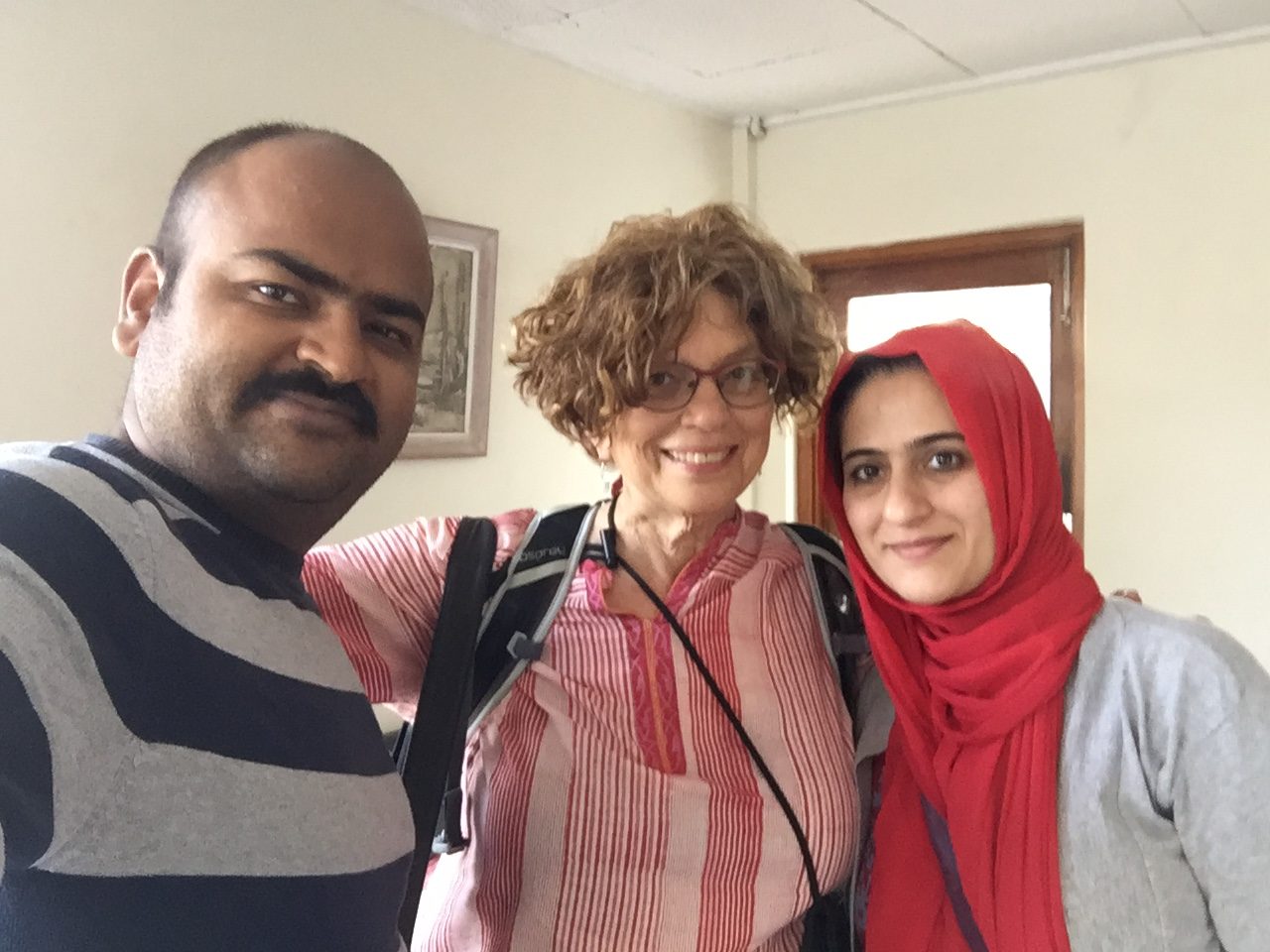
Parag (with his lovely wife Asma) works at Panchgani. He arranged many of our Delhi-Agra-Pune logistics

Who needs a conference room for a meeting in this lovely place
It has been wonderful to have the beauty of this refuge filled with calm and green trees, flowers, and positive vibrations — before I rejoin Maher with all its vibrant life, chaos, and the noise of streets and many children – all bathed in love and compassion.
Our GCJ delegation was filled with 24 extraordinary people. Of course, I knew our awesome 8 US women well – and felt so deeply supported and appreciated by them. Then we had 3 internationals – a German young woman of just 18 years who is on her gap year as a volunteer in Pune, a lovely young man from Venezuela who has been volunteering at Maher, and a Spanish woman who had been an intern in Pune as a social worker. Then we had our amazing Indian delegates – 5 women and 4 men plus 3 Maher guys (Mangesh, Gaus and their dear friend Nikhil). So in all, the delegation comprised 8 men and 16 women (including me!). We had about a dozen circles – including team building, compassionate listening. and a powerful gender dialogue. Fascinating discussions! Of course, we had a lot of explaining to do about our new US administration. Many of us made traditional home-cooked dishes for each other: I made matzoh ball chicken soup, Irene managed to make apple crisp, and Liz stuffed us with her amazing self-caught and smoked salmon plus more.
While together at Maher – we stayed at Vatsalydam. It is one of the largest homes, a big property with gardens and smaller homes for grandmas, boys, and mentally-disturbed persons, and elderly men. The main house had over 100 mentally ill or developmentally-delayed women on the ground floor and several homes for girls on the upstairs. It was so beautiful to see the interactions between these different groups – filled with loving compassion, patience, and affection. Some of my favorite times were singing and dancing joyously together, playing with the kids, and hugging the women. Some of our most exhausting moments were the trying, long, bumpy, and dusty bus rides to many outlying Maher homes. When I have a chance to debrief with Gaus, Mangesh, and Sister Lucy we will explore the question of ‘quantity’ vs ‘quality’ of these visits from the delegates perspective. We longed for more time to interact with the residents but often these visits were mainly being very, very warmly greeted – with song and ritual (incense and bindi marking with red vermillon or gold turmeric powder, perhaps a cup of tea or water, a short talk, occasional performance by students, possibly very short Q&A, etc). Before we knew it, we were back on to the bus to yet another location. Of particular interest was the tribal village that has been transformed by the relationship developed with Maher. Now they are growing many acres of veggies and children are going to school.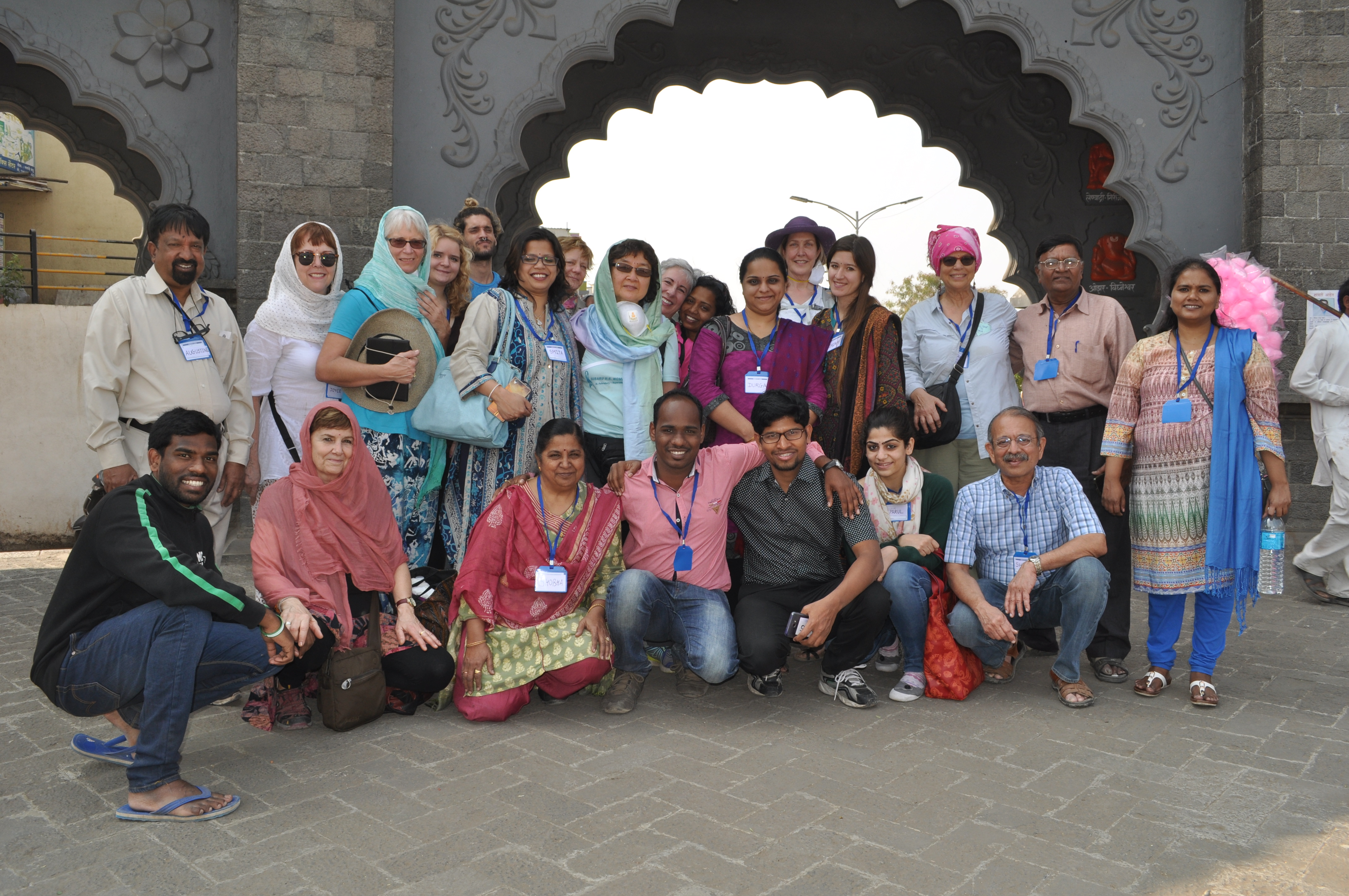
We saw the slum where the ‘Fun School’ attracts little ones with games and food as they wouldn’t be sent to school. Also, after ten long and patient years they now have a computer lab for the older children. What a struggle of love, after building relationship and trust (15 years ago or so, Sister Lucy actually moved in to live in the village for several months – they were so wary, thinking she was coming to convert them to Catholicism or trick them and take their land which had happened by others) the Fun School started. Some of the school-aged children were brought to live at Maher so they could go to school. They began to show the value and the culture changed to where school was appealing. One of the school girls has now become a policewoman and another one a social worker! They started the computer lab about 10 years ago: at first it wasn’t valued – no one knew anything about computers. They were all stolen. Sr Lucy persevered and put replacements in. After a while again they were stolen. Again she put in replacements… by now some of the kids were learning and appreciating and the community came to value them and trust her sincerity. So at last, the community itself guards them and calls as soon as there is any trouble. One of my most striking insights or lessons as a global citizen came on that visit day: one of the delegates said, well why don’t they just put in a security camera! Mangesh, dear one who grew up at Maher and says, ‘love is my religion’, quickly responded: that would be materialistic instead of heart-fullistic. Wow! In our western world we value the thing – the property – and I realized I was blind to the message hidden in a security camera which is that we don’t trust you and we value this property way more than our relationship or connection with you.
I am fatiguing so that’s all for now! I’ll hope to get to write more soon about our amazing Delhi visits with the likes of Vandana Shiva and Swanu Agnivesh as well as several extraordinary NGOs, our tourist adventures in Old Delhi and Agra and so much more about Maher and the delegation. Write to me! Tell me the news and spirit and arising movement!
NEWS FLASH: GCJ Delegation departs on January 9! Stay tuned for blog entries from India.
We will begin in Delhi: all 11 US delegates will gather by Thursday evening, January 12. We’ll spend the weekend enjoying visits to historical sites, such as temples, fortes, Old City, the museum at the site of Gandhi’s assassination — and a trip to Agra to see the Taj Mahal. We will also visit several NGO’s and meet local leaders.
Then on to Pune where we’ll join our 11 Indian delegates plus 2 Maher hosts and spend 8 days in the rural areas of Maher homes, interacting with the women and children of our home site (Vatsalyadham) as well as visiting the many varied aspects of Maher activities, including the self help groups, preschool in the slum, women’s vocational training, etc.
We’ll also visit Pragati Leadership in Pune, to discover how they combine western results-orientation training with spirituality, as well as their small foundation that supports and empowers urban women. The US delegates will spend our last days up in the Hill Station of Panchagani, partaking in the international program of Initiatives of Change in the morning and spending the afternoon reflecting and harvesting on all our learning. The program ends in Pune, on Friday afternoon, January 27.
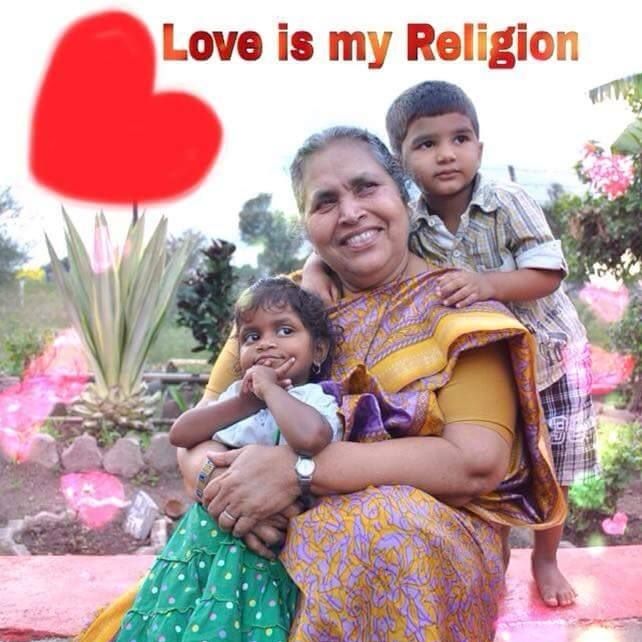
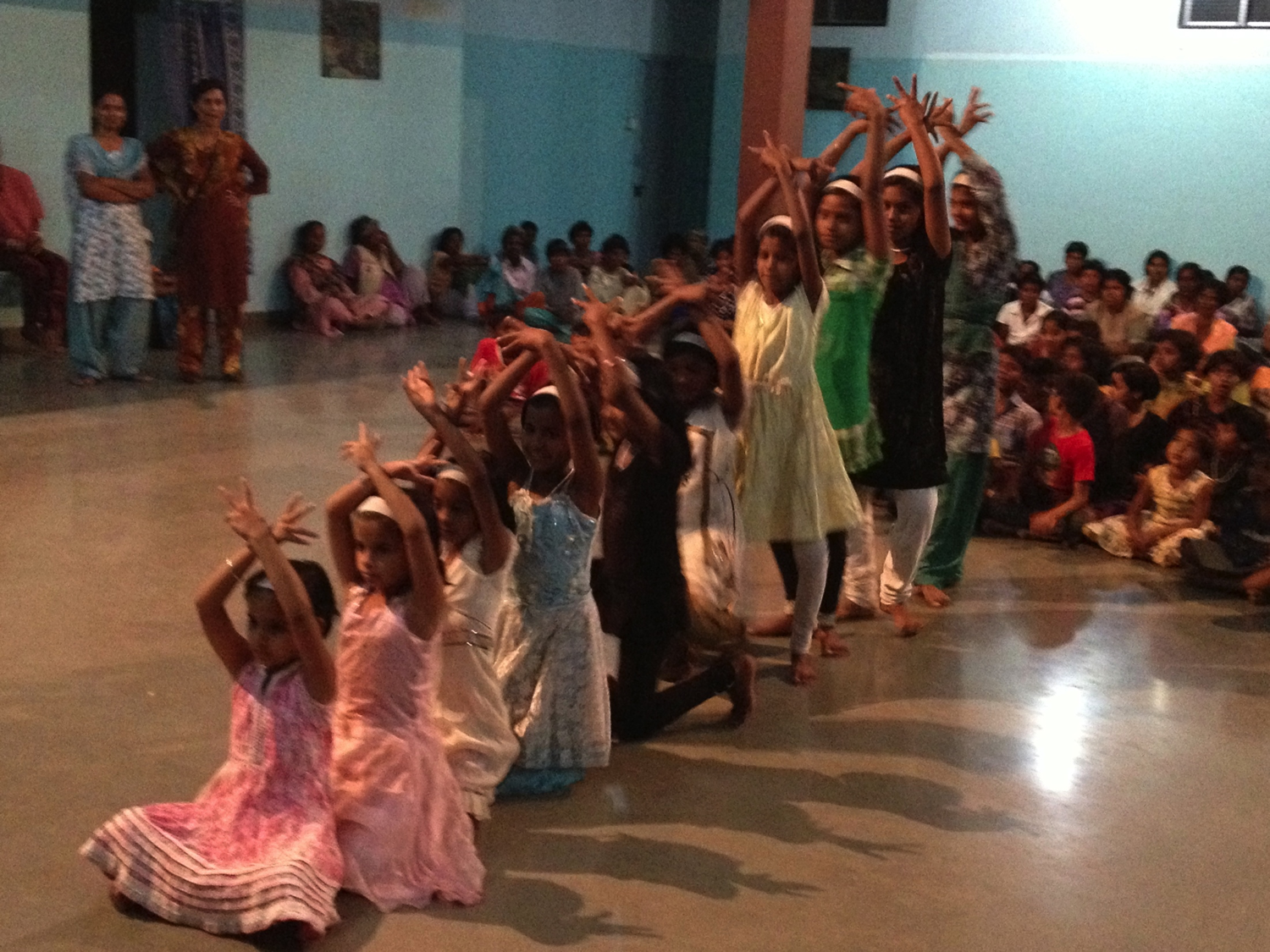
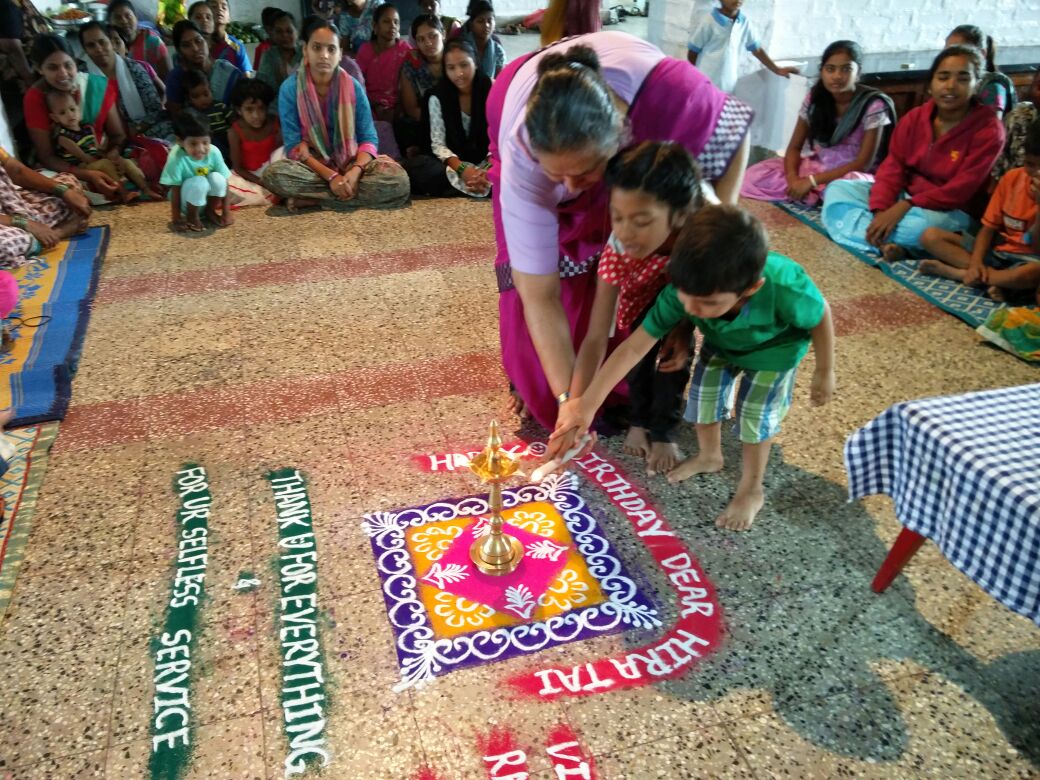











 Once you settle in, the fun thing to do is take day trips. There are villages all around the lake. I got to visit a number of them. In each town, the women and girls wear the beautiful and colorful hand woven huipil symbolic of their village. Everyone is very friendly – is considered polite to always say hello, Buenos dais (or tardes…). The people are so beautiful – though, compared to most North Americans, tiny: I feel so huge and lumbering!
Once you settle in, the fun thing to do is take day trips. There are villages all around the lake. I got to visit a number of them. In each town, the women and girls wear the beautiful and colorful hand woven huipil symbolic of their village. Everyone is very friendly – is considered polite to always say hello, Buenos dais (or tardes…). The people are so beautiful – though, compared to most North Americans, tiny: I feel so huge and lumbering!
When I first arrived I came through Panajachel, known as Pana, which was the first area to become well known by tourists and has many hotels, restaurants, nonprofit projects, markets, etc. It is a great place to shop and access services but lacked much charm or atmosphere. You can hop on a boat for a 20 to 30 minute trip across to San Pedro for just 25Q (quetzals – about 7.5 to a dollar, so the ride cost $3.25).
I found San Pedro quite enjoyable – easy to walk around through narrow alleys that the ever present tuk tuks managed to squeeze through, with a steep hike up to the central market, church and lovely tiny city park. I enjoyed heading to the outskirts of town where my friend Nancy is living in a friend’s house that she has helped to landscape and decorate exquisitely. With an incredible view once you hike up to the upper house and climb up three steep flights to the terrace! Wowowowow.
One day we headed to nearby Santiago – a more traditional town where even the men still where their village trajes. It is beautifully situated on the shore of a deep inlet of the lake. This is the town told about in Martin Pechtel’s colorful and amazing memoir of how he became a shaman, Secrets of the Talking Jaguar – a great read, especially while here. This town was the capital of the Tz’utujil since pre-colonial times. During the war Santiago was especially hard hit with state-sponsored violence. Many villagers were murdered, tortured, disappeared – including the assassination of Roman Catholic Priest Stanley Rother by right-wing death squads on 28 July 1981, and the massacre of 14 people (and wounding of 21 others) when the Guatemalan Army opened fire on a crowd of unarmed civilians on 2 December 1990. Today there are collectives of women’s back-strap weaving and many Mayan traditions continue. For example, there are Cofradías (religious brotherhoods) who are the guardians of the modern and ancient religious practices: one task is to take an annual turn in guarding the cult of Maximón –a cigar puffing god-effigy to whom people come to offer liquor and tobacco in exchange of favors.
On the other side of my base of San Pedro is a small village, San Juan. This town seems to have a very unique character. Almost no hotels, no tourists – and a very enterprising population: apparently an American helped create a women’s cooperative many years ago and from that has spawned many women’s’ cooperatives. So all of the shops sell wonderful, organic, natural dye products and all share the profits with their members. There are many gorgeous murals throughout the village. And some of the services such as school and sports field seem better established and maintained.
Beyond that I visited San Marcos – a haven for New Agers. There are holistic healing centers, yoga retreats, and health food stores. It is on the shady side of the lake and has a more tropical feel. Very quiet, peaceful and lush, with narrow paths from the dock leading up to a sweet shared playground where gringo and native families gather to watch the children play. There is a beautifully maintained little park with paths and vistas and swimming holes – and four ceremonial circles (one for each pillar of the earth – used at different seasons) – where I came upon Tata Pedro and Shuni.
I also visited Santa Cruz, accessible only by boat: there I visited friends’ of friends who founded Amigos de Santa Cruz which has established wonderful programs for the six small communities associated with the town – for vocational training, nutritional education, early childhood education, and scholarship supported advanced education. This small village needed to be traversed by precarious wood planked walk ways at the lake’s edge, as the planned lovely broad pathway was now submerged.
On another day I took a day trip away from the lake to Chichicastenango’s famous market and vibrant K’iche town. The shopping everywhere in Guatemala is insane: there is such richness of beautiful textiles, beads, etc. in wild and vibrant colors with painfully detailed handwork. Needless to say, my suitcase is now emptied of the books and art materials I brought to Taa’Pi’t but is overflowing with handicrafts…. The church at ChiChi is fascinating, with observers conducting a maya-catholic blend of ritual similar to what I once saw in San Cristobal in Mexico. Candles, incense, offerings of corn, flowers, pine boughs, liquor and prayers by shaman while the Catholic saints look on. The church is the site where the one remaining copy of the holy Popul Vuh telling the Maya origin stories was found in the early 18th Century.
…I was sad to leave the gorgeous lake, which really cast a spell upon me… But excited to have more adventures ahead: I’ll soon post the last two blog entries – one from Tecpan and my visit to Project Somos and one from the jungles of Peten where I visited Tikal.


Hard to believe tonight is my 10th and last night here at the Lake. Time slows down and yet is also very full. I’ve just felt very present to every moment and reluctant to step away from what is happening to write about it. It has been a blessing to have several friends to connect with here, to get a deeper sense of life and the changes going on.
The Maya call the lake Our Mother – and she is so beautiful! My eyes drink in the view, the beauty – and immediately want to take it in again and deeper. Now I understand why many say it is the most beautiful lake in the world… Surrounding by mountains including three awesome volcanoes 10,000 feet high that look like a child’s drawing, they are so vertical and steep, arising directly from the shore. Though once some of the slopes were denuded and ravaged by scars of war, now there is green everywhere, with many coffee trees and cornfields all around. The lake was formed as a caldera about 84,000 years ago and is Central American’s deepest lake (1,120 feet): It is technically endorheic (lacking direct flow to the sea) but substantial seepage feeds two nearby rivers: in other words, water flows in but not out. The introduction of bass some years ago ultimately led to the loss of the local flora and fauna. Plus the introduction of fertilizers and raw sewage which run off compounded by the lack of circulation which has contributed to many ecological issues, with the growth of a deadly bacteria (cyanobacteria) at times.
My hotel is right at the lake-shore – in fact, it may soon be IN the lake, as it is rising. Read more
“Building the Global Community through Grassroots Connections, Bridges of Peace”
About | Contact | Get Involved
4425 Baker Ave NW, Seattle WA 98107
© 2018 Global Citizen Journey
+1.206.310.1203 | info@globalcitizenjourney.org
All donations to Global Citizen Journey are tax-deductible to the full extent of the law


